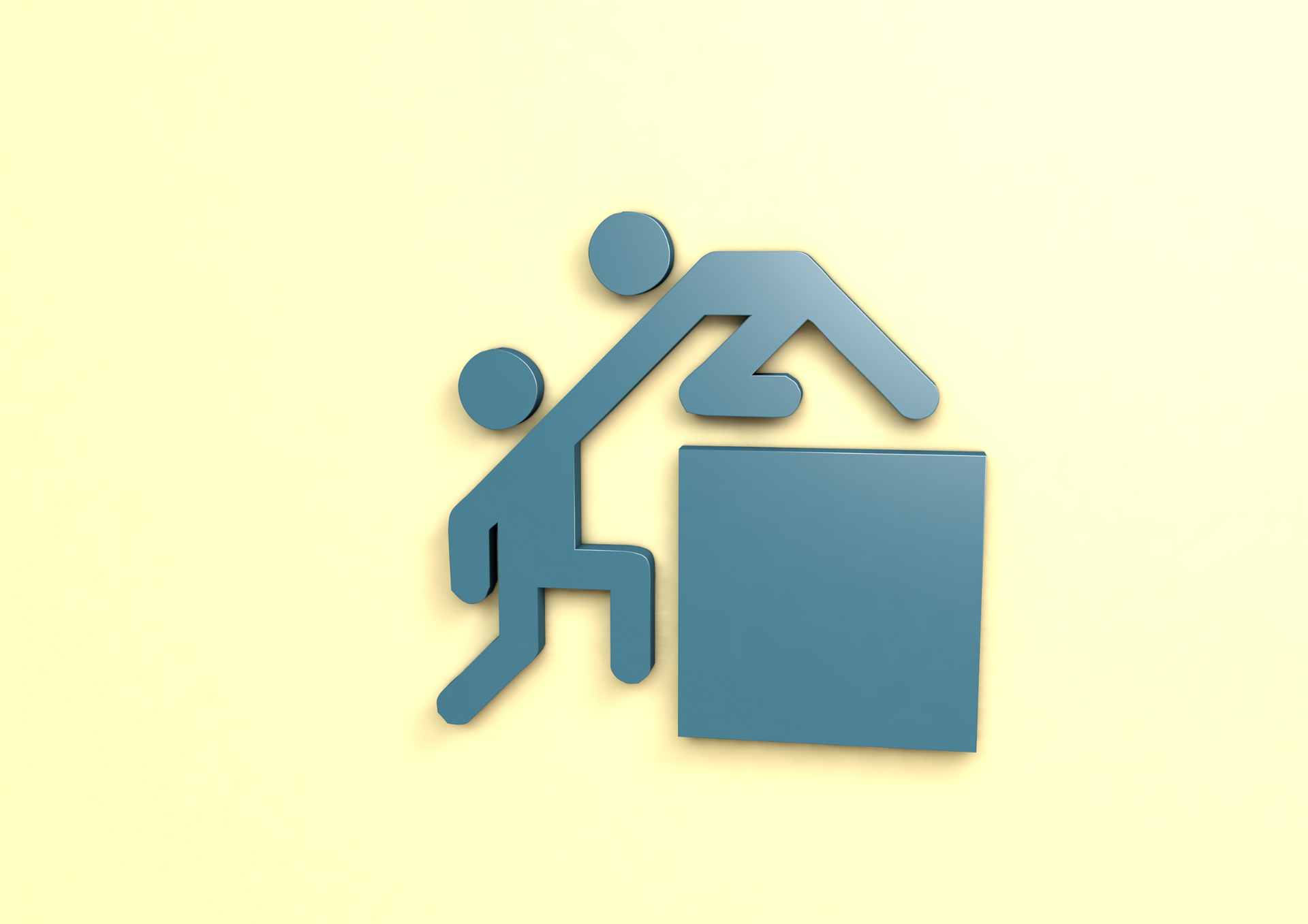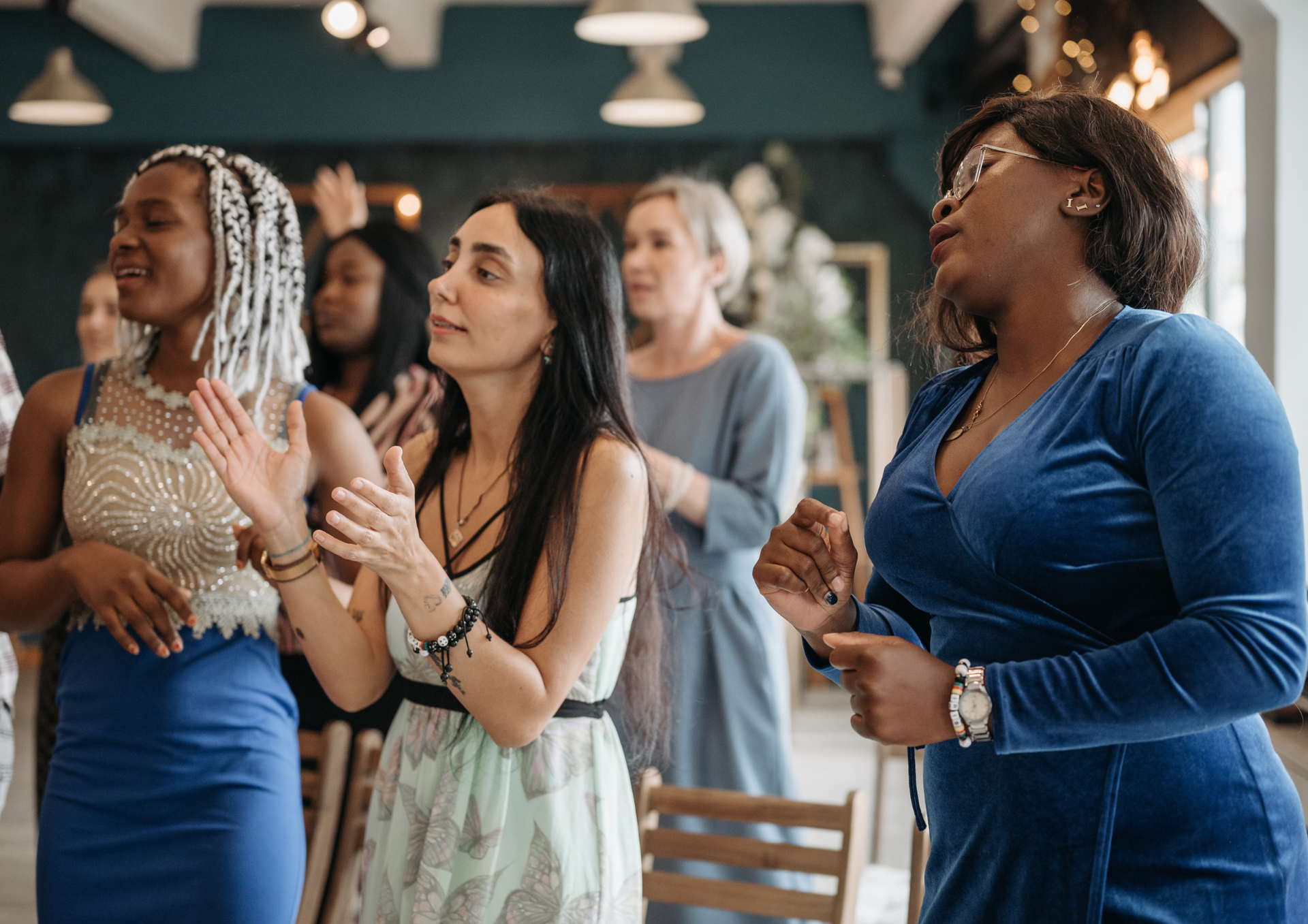News, thoughts and reflections
Blog

Dance offers more than just physical activity - it’s a powerful catalyst for enhancing mental wellbeing. From structured classes to free‐form movement, engaging in dance can lift mood, reduce anxiety and depression, foster social bonds, and sharpen cognitive functions. Below, we explore the multifaceted ways in which dancing supports positive mental health, drawing on recent research and expert insights. Elevating Mood Through Neurochemical Shifts Engaging in rhythmic, full‐body movement triggers the release of endorphins - our body’s natural “feel‐good” neurotransmitters - while simultaneously lowering levels of the stress hormone cortisol. A large systematic review by the University of Sydney found that structured dance programs of at least six weeks’ duration produced significant improvements in emotional wellbeing, often outperforming or matching other forms of exercise. Even brief sessions of ecstatic dance, which emphasize uninhibited, intuitive movement, have been shown to elevate dopamine and endorphin levels, yielding immediate mood boosts and a sense of calm. Reducing Anxiety and Depression Meta‐analyses consistently report that dance interventions significantly reduce symptoms of depression and anxiety in diverse populations, from older adults to college students. One analysis of 19 randomized trials demonstrated a notable decrease in depressive symptoms among participants of dance interventions. Importantly, dance’s combination of physical exertion, cognitive challenge (learning choreography), and social interaction creates a multifaceted therapeutic effect that surpasses many traditional interventions. Managing Stress and Enhancing Resilience Dance movement therapy (DMT) has gained traction as an evidence‑based approach for stress management. A recent review in Arts in Psychotherapy highlighted that DMT facilitates illness acceptance, motor learning, and emotional regulation, helping participants cope more effectively with chronic stress and psychological trauma. By integrating expressive movement with reflective discussion, DMT offers a safe space to process difficult emotions and build adaptive coping strategies. Fostering Social Connection and Belonging Dancing is inherently social, whether practiced in couples’ dances, group classes, or community gatherings. A narrative review found that social dance programs enhance social cognition, empathy, and a sense of belonging - key protective factors against loneliness and social isolation. College‐based dance training has additionally been linked to improved self‐esteem and peer support , demonstrating how shared movement can strengthen mental health among younger adults. Boosting Cognitive and Emotional Functioning Beyond emotional benefits, dance demands memory, attention, and spatial awareness. The complexity of learning and recalling choreography stimulates neuroplasticity, supporting executive functions such as planning and problem‐solving. Researchers report that structured dance interventions yield cognitive gains comparable to other mental‐fitness activities, with added rewards in motivation and social engagement. Embracing Ecstatic and Creative Movement Ecstatic dance - a free‐form, music‐driven practice - encourages participants to move without judgment or predetermined steps. Studies suggest that this form of dance enhances mindfulness, self‐discovery, and emotional release, making it particularly effective for those seeking a non‑structured approach to mental wellbeing. Incorporating dance into weekly routines offers an accessible, joyful path to stronger mental health. Whether joining a formal DMT group, attending a social dance night, or simply putting on your favorite track and moving freely at home, the benefits are profound and well‐supported by research. As we continue to uncover dance’s therapeutic potential, one thing remains clear: when it comes to nurturing the mind, a little rhythm can go a long way!

Coaching and coaching psychology, while sharing some overlapping principles, serve distinct roles in the realm of personal development and performance enhancement. Although both approaches aim to foster growth and well-being, they differ in focus, methodology, and theoretical underpinnings. Defining the Fields At its core, coaching is a performance-driven process that emphasizes goal setting, accountability, and action planning. A coach works closely with individuals to help them identify obstacles, harness their strengths, and develop strategies for achieving both professional and personal objectives. The coaching process is client-centered, empowering individuals by asking powerful questions and encouraging self-reflection without necessarily delving into emotional or psychological histories. Coaching psychology , on the other hand, bridges the gap between coaching and psychological science. It integrates evidence-based psychological theories and practices into the coaching process. While it maintains the performance and goal-oriented perspective of traditional coaching, coaching psychology also pays attention to the underlying psychological factors that influence behavior, motivation, and decision-making. Practitioners in this field often have formal training in psychology and bring clinical insights to help clients overcome deeper-seated mental or emotional challenges that might impede performance or overall well-being. Methodologies and Techniques Standard coaching techniques include strategies such as goal setting, accountability measures, time management, and solution-focused questioning. Coaches encourage clients to map out specific, measurable, attainable, relevant, and time-bound (SMART) goals, and regularly review progress to foster a sense of achievement. This approach is particularly popular in business environments, sports, and executive leadership, where measurable performance improvements are highly valued. Coaching psychology, however, incorporates a range of psychological theories including cognitive-behavioural techniques, positive psychology, and developmental theories. These methods allow practitioners to address not only what actions need to be taken but also to understand the beliefs, emotions, and cognitive patterns behind those actions. For example, a coaching psychologist might help a client recognize how negative self-talk or past experiences are limiting their potential, and then work on reshaping these thought patterns. This dual focus on performance and psychological wellbeing leads to a more holistic approach to development. Training and Qualifications One of the key differences between coaching and coaching psychology lies in the training and qualifications required. Many professional coaches have accredited certifications from organizations such as the International Coach Federation (ICF) or similar bodies. Their training emphasizes practical tools and techniques, ethical practice, and often includes mentorship and supervised practice. Coaching psychologists, in contrast, usually possess advanced degrees in psychology (such as a master’s or doctorate) and additional specialized training in coaching methods. This extra layer of academic rigour and research-based practice equips them to address more complex behavioural and emotional issues. Their dual expertise allows them to deploy interventions that promote both immediate performance improvements and longer-term mental resilience. Focus and Outcomes Coaching generally prioritizes actionable outcomes and the achievement of specific goals. It is ideally suited for individuals and organizations that require a structured process to drive performance improvements. Coaching psychology, while also focused on outcomes, delves deeper into personal growth by exploring emotional intelligence, self-regulation, and internal motivations. Clients working with coaching psychologists may benefit from a more in-depth understanding of their personal narratives, leading to lasting change and enhanced psychological well-being. Conclusion While both coaching and coaching psychology aim to empower individuals, they differ significantly in their scope and methods. Coaching provides a structured, goal-oriented approach that can drive immediate performance gains. In contrast, coaching psychology leverages the insights of psychological science to offer a more comprehensive, holistic pathway to personal growth. The choice between the two depends largely on an individual’s needs—whether they seek straightforward performance improvement or a deeper, more integrated personal transformation.

The Welsh National Opera (WNO) has long recognized the transformative power of music, particularly singing, in enhancing both physical and mental well-being. Through innovative initiatives that blend the art of opera with modern therapeutic practices, WNO is at the forefront of using singing as a tool for positive health. One of WNO’s flagship programs, Wellness with WNO , was developed in collaboration with NHS Wales Health Boards and launched in November 2021. Initially designed to support individuals grappling with Long COVID, this initiative has evolved into a comprehensive program that promotes healthy breathing, improved lung function, and better overall posture. Participants engage in a six-week online course where they learn operatic breathing techniques and vocal exercises that are not only effective for managing breathlessness but also help reduce anxiety and stress. The online format, delivered via Zoom, has made the program accessible to a broader audience, ensuring that geographical limitations do not hinder individuals from accessing these valuable health resources. The success of Wellness with WNO is evident in the overwhelmingly positive feedback from participants. Many have reported significant improvements in their physical health, with enhanced circulation and reduced symptoms of chronic respiratory issues. Yet, the benefits extend well beyond the physical realm. For numerous participants, the program has been a source of mental rejuvenation, fostering an environment where the joy of singing becomes a therapeutic escape. One participant remarked that the experience “gave me back my joy of life,” highlighting the emotional uplift and improved sense of self that come from engaging in group singing sessions. In addition to supporting individuals with Long COVID, WNO has broadened its outreach to address other chronic conditions. The expansion of the program underscores a growing understanding of the interconnectedness between physical ailments and mental health. Singing, with its inherent ability to regulate breathing and induce relaxation, plays a pivotal role in alleviating symptoms associated with these conditions. Research suggests that the act of singing releases endorphins and dopamine, neurotransmitters that are essential for feelings of pleasure and well-being, thereby reducing stress and mitigating symptoms of anxiety and depression. Moreover, group singing fosters a sense of community and belonging. The collective experience of vocal expression not only breaks the isolation often felt by individuals with chronic health issues but also creates a supportive network of peers. This social aspect is crucial, as the bonds formed during shared musical experiences contribute significantly to improved mental health. For many, the choir becomes a sanctuary where the challenges of daily life are momentarily set aside in favour of collective expression and mutual support. The work of the Welsh National Opera in integrating singing with health initiatives is a testament to the potential of the arts as a catalyst for healing. By bridging the gap between cultural enrichment and therapeutic practice, WNO is not only enhancing the lives of those directly involved in its programs but also setting a powerful example for how the creative arts can serve as an effective modality for promoting positive health. As these initiatives continue to grow, the ripple effects on both individual well-being and community health promise to be profound, marking a significant step forward in the use of music as a vehicle for transformative change.

The Christmas season can be a whirlwind of activity, but it’s also a perfect opportunity to cultivate mindfulness and create moments of calm amidst the busyness. By intentionally incorporating small, mindful practices into your celebrations, you can embrace the true spirit of Christmas and recharge for the new year ahead. Here are several opportunities to foster mindfulness and calm this Christmas season: 1. Start Your Day with Intent Begin each day with a brief mindfulness practice. Even five minutes of deep breathing or a guided meditation can set a tone of calm and presence for the rest of the day. Consider writing down a daily intention - whether it’s to be patient, to savour each moment, or to express gratitude - and keep it in mind as you move through your activities. 2. Practice Mindful Gift-Giving Gift-giving is a cherished part of the holiday tradition, but it can also become a source of stress. Shift your focus from the material aspect to the thoughtfulness behind each gift. When choosing a present, think about what would truly bring joy or comfort to the recipient. Wrap gifts mindfully, paying attention to textures, colors, and the act of giving itself. 3. Embrace the Power of Silence In a season often filled with music, chatter, and festivities, carve out time for quiet moments. Spend a few minutes in silence each day, perhaps while watching the weather, sitting by the tree, or lighting a candle. Silence allows your mind to settle and brings an unexpected sense of peace. 4. Savour Seasonal Flavours Holiday meals and treats offer a perfect opportunity to practice mindful eating. Instead of rushing through meals, slow down and fully experience each bite. Notice the colours, smells, textures, and flavours. Eating mindfully not only enhances enjoyment but also helps you feel more connected to the moment. 5. Be Present in Holiday Gatherings Whether you’re attending a big family dinner or a small get-together, practice being fully present. Put away distractions like phones and focus on the people around you. Listen deeply to conversations and engage with those you’re with. Remember, connection is at the heart of the Christmas season. 6. Take a Mindful Walk A brisk walk through your neighbourhood, a local park, or down a country path can be grounding and restorative. Use the walk as an opportunity to connect with nature and practice mindfulness. Pay attention to the crisp air, the crunch of leaves underfoot, and the sights and smells around you. 7. Reflect on Gratitude Set aside time to reflect on what you’re grateful for this year. You might create a gratitude list, write thank-you notes, or simply express your thanks aloud. Gratitude helps shift focus from stress or overwhelm to the positive aspects of life. 8. Give yourself the Gift of Rest Amid the holiday bustle, don’t forget to prioritize rest. Schedule downtime for yourself, whether that’s curling up with a good book, taking a warm bath, or simply allowing yourself a few extra minutes in bed. Restoring your energy enables you to fully enjoy the season. By weaving these mindful moments into your Christmas routines, you can create a season filled with intention, peace, and joy. Embracing mindfulness not only enhances your own well-being but also brings a deeper sense of connection to the magic of Christmas.

Midlife is often a time of transition and self-reflection. For many, it brings significant changes: children leaving home, shifts in career, the aging of parents, or even personal health challenges. These transitions can lead to a profound sense of loss or lack of purpose, leaving many feeling adrift in what has traditionally been called the "midlife crisis." However, midlife doesn’t have to be a crisis. Instead, it can be an opportunity for renewal and growth. By embracing these changes and reimagining this stage of life, individuals can rediscover their sense of purpose and embark on a fulfilling new chapter. Why Midlife Can Feel Like a Loss of Purpose Changes in Roles: For parents, the transition to an empty nest can leave a void. The routines and responsibilities that once defined daily life may no longer apply, leading to questions about identity and self-worth. Career Plateaus or Shifts : Many people reach a point in their careers where growth slows, or they may begin to feel disconnected from their work. For others, retirement or job loss can create uncertainty and a loss of routine. Aging and Mortality : Midlife often brings the realization that time is finite. Physical changes and health concerns can amplify this awareness, prompting deeper reflections about life’s meaning and accomplishments. Changing Relationships : Friendships may shift as life stages diverge, and caregiving responsibilities for aging parents can alter family dynamics. These changes can further contribute to feelings of isolation or disconnection. Reimagining Midlife as an Opportunity While these changes can be challenging, they also offer a chance to reassess priorities, explore new interests, and redefine what brings joy and fulfilment. Here are some ideas for finding purpose during midlife: Revisit Old Passions and Hobbies Midlife often provides the freedom to explore interests that may have been set aside during younger years. Whether it’s painting, gardening, writing, or learning a musical instrument, rediscovering a passion can reignite a sense of creativity and purpose. Consider taking a class, joining a local group, or setting aside time each week to immerse yourself in these activities. The joy of doing something you love purely for yourself can be transformative. Pursue Lifelong Learning Learning doesn’t stop with age. Many midlife individuals find fulfillment in gaining new skills or knowledge. Online courses, community college classes, and workshops offer opportunities to dive into subjects ranging from art history to coding. Not only can this provide intellectual stimulation, but it may also open doors to new career paths or volunteer opportunities. Engage in Volunteer Work Giving back to the community is a powerful way to find meaning. Whether it’s mentoring young professionals, volunteering at a local shelter, or working with nonprofit organizations, contributing to others’ well-being can create a strong sense of purpose. Identify causes that resonate with you and seek out ways to get involved. The connections and impact you make can be deeply rewarding. Prioritize Health and Wellness Midlife is an ideal time to focus on physical and mental well-being. Regular exercise, a balanced diet, and mindfulness practices like yoga or meditation can enhance energy levels and improve mood. Setting health goals—whether it’s completing a 5K, adopting healthier eating habits, or managing stress—can provide structure and a sense of achievement. Cultivate Meaningful Relationships Strong connections are essential for a sense of belonging and purpose. Reach out to old friends, nurture existing relationships, and consider joining social groups or clubs to meet new people. Open and honest communication with loved ones about your feelings and goals can strengthen bonds and foster mutual understanding during this transitional period. Set New Goals and Dreams Midlife can be a time to reevaluate what truly matters and set fresh goals. These could be related to travel, career shifts, personal projects, or spiritual growth. Reflect on what excites and inspires you, and take small steps toward achieving those dreams. Creating a vision board or journaling about your aspirations can help clarify your purpose and keep you motivated. Seek Professional Guidance Sometimes, finding clarity requires outside help. Life coaches, therapists, or career counselors can provide valuable insights and tools to navigate midlife transitions. Don’t hesitate to seek support if you feel stuck or uncertain. Embracing the Journey Midlife is not an ending but a new beginning. It’s a chance to redefine success, embrace change, and create a life that aligns with your evolving values and passions. By viewing this time as an opportunity for growth, you can move beyond feelings of loss and rediscover a vibrant sense of purpose. Remember, it’s never too late to dream a new dream, set new goals, and find joy in the journey ahead. Our Midlife Makeover group coaching session can help you to embrace this stage with confidence, clarity, and purpose.

How about making a novel gift of a coaching experience to yourself or a loved one this Christmas? A coaching session is a luxurious treat for people of all ages – a calm, supportive space to really think about yourself, your life and your hopes and dreams for a more positive future. A coach works with you to identify what changes may be needed to build your happier life and plan out the steps needed to start that journey. Did you know that most New Year resolutions are broken by the end of the first week? That’s because most of us underestimate how hard it can be to break old habits and establish new ones. To give yourself the best chance of making a lasting change in your life, you need to be clear about three things: Understand why you want to make the change and what benefits you hope the change will mean in your life – getting clear on this will help you to sustain your efforts, especially when the going gets tough. Create a feasible timescale and plan of action for the change, with small steps to take you from your current position to where you want to be. Remember to build in plenty of mini rewards as you move forward. Assemble a support network of people who can support you and check in with the progress you are making. This will help you to stay focused on your intentions and stay accountable to yourself. Coaching can take the form of a one-off session or a more regular series of sessions depending on support needs and personal budgets. It can be 1-to-1 to enable personalised support, or in a small group to connect clients with peer support and encouragement. To book a 1-to-1 coaching session or series, get in touch at info@creativiacoaching.com to discuss your requirements. Alternatively, why not choose a group coaching experience as a special Christmas treat for yourself or a deserving friend or relative? There are three different one-off experience packages, each under £50, to choose from: The Lifestyle Booster package [Wednesday 15 th January] – for those keen to review current lifestyle habits, using the 6 pillars of lifestyle medicine and plan improvements for a healthier, happier life in 2025. The Midlife Makeover package [Wednesday 22 nd January] – for 50+ midlifers who may want to take stock, review options, explore opportunities for personal growth or new directions to create an uplifting plan for life in 2025. The Carer Recharge package [Wednesday 29 th January] – for unpaid carers to reflect on the need to balance self-care with the needs of others to prevent burnout and to create a plan for greater balance and joy in life in 2025. Visit Creativiacoaching.com to book a coaching experience package for yourself, a friend or loved one and get a lasting gift to make 2025 the year that positive change happens!

Caring for a loved one, whether a partner, parent, or friend, can be incredibly rewarding, but it also comes with significant emotional and physical challenges. Carers are the unsung heroes who provide invaluable support, yet they often face immense pressures that can lead to stress, burnout, and health problems. Understanding these pressures and finding ways to reduce stress is crucial for maintaining both the well-being of the carer and the quality of care they provide. The Pressures Carers Face The role of a carer often requires selflessness, dedication, and patience. However, it can also be isolating and overwhelming. Here are some common pressures carers experience: Emotional strain: Caring for someone with a chronic illness, disability, or mental health issue can be emotionally draining. Carers often experience feelings of guilt, anxiety, and sadness, especially when their loved one’s condition worsens or when they feel they are not doing enough. The emotional burden can weigh heavily, particularly for those who have not been trained to handle the complex needs of the person they care for. Physical Exhaustion : Physical tasks such as lifting, helping with mobility, or providing personal care can take a toll on a carer’s body. The physical demands often lead to exhaustion, chronic pain, and even injury, especially when the carer is not getting enough rest or help. Financial Strain : Many carers reduce their working hours or leave employment altogether to care for a loved one. This reduction in income, coupled with the potential costs of healthcare or home modifications, can cause significant financial strain. The stress of balancing finances can add an additional layer of anxiety to an already challenging situation. Lack of Support : Many carers feel isolated, particularly if they are the primary caregiver. Lack of social support, either from family or friends, can intensify feelings of loneliness and stress. The demands of caregiving can lead to social withdrawal, further exacerbating the sense of isolation. Limited Time for Themselves : Caring for another person often leaves little room for self-care. Many carers neglect their own health, hobbies, or social lives because of the time and energy required to meet the needs of their loved one. This neglect can lead to burnout, depression, and a decline in the carer’s own health. Ways to Reduce Carer Stress While caregiving is inherently challenging, there are strategies that can help reduce the pressures and promote the well-being of carers. Seek Support and Build a Support Network : One of the most effective ways to reduce stress is to reach out for help. Connecting with others in similar situations can provide emotional support and practical advice. There are many support groups and online communities where carers can share experiences and learn from one another. In addition to peer support, don’t hesitate to ask family and friends for help, whether it’s for respite care, running errands, or simply offering a listening ear. Take Breaks and Prioritize Self-Care : It is vital for carers to take regular breaks, even if it’s just for a few hours. This can provide much-needed respite and allow them to recharge. Self-care should be a priority - whether it’s a walk, a hobby, or simply spending time alone. Carers must remember that taking care of their own well-being isn’t selfish; it’s essential for being able to provide effective care in the long term. Delegate Responsibilities : Many carers feel that they must handle everything on their own, but it’s important to recognize when help is needed. Delegating tasks, even if it’s just one or two, can make a significant difference. Professional caregivers, home health aides, or other family members can help share the load. In some cases, financial assistance or respite care programs may be available to provide temporary relief. Set Boundaries : Carers often struggle with saying no, especially when they feel obligated to help their loved one at all times. However, it’s important to set clear boundaries and communicate them to others. This helps avoid overextending oneself and reduces the risk of burnout. Setting realistic expectations for both the carer and the person receiving care is key to maintaining balance. Stay Organized : Caregiving can involve managing appointments, medications, and a variety of tasks. Staying organized can alleviate some of the stress. Keeping a schedule, making lists, and utilizing digital tools can help carers stay on top of their responsibilities and reduce the mental load. Practice Stress-Relief Techniques : Incorporating relaxation techniques into daily life can significantly reduce stress. Mindfulness meditation, deep breathing exercises, and yoga can help calm the mind and body. Even short sessions can make a big difference in reducing anxiety and tension. Seek Professional Help When Needed : If stress becomes overwhelming or leads to symptoms of depression or anxiety, it’s important for carers to seek professional help. Mental health professionals, such as therapists or counselors, can offer strategies to manage stress and emotional strain. While caregiving can be one of the most fulfilling experiences, it’s not without its challenges. The pressures faced by carers can have a significant impact on their mental and physical health. By seeking support, taking breaks, and prioritizing self-care, carers can reduce stress and continue to provide compassionate care without sacrificing their own well-being. It’s important to remember that caring for yourself is not only beneficial for the carer but also for the person receiving care. The Carer Recharge package is a great way for carers to reflect on the need to balance self-care with the needs of others to prevent burnout and to create a plan for greater balance and joy in life in 2025. Click the link to learn more and book your place.

A collage is an art technique where pieces of paper or other materials are stuck down onto a card surface to create an image. This activity uses different colours of tissue paper, as the translucent nature of this paper type creates interesting blends of colours when applied onto a glue surface. This feature can be used to ‘paint’ with paper and create striking landscape pictures. Materials: Pen/pencil, A5 card, Tissue paper, PVA glue & spreader. Step 1 Take a mindful 30 seconds to focus on breathing in and out slowly for at least 5 breaths. Step 2 Tear different colours of tissue paper into stripes of various widths and sizes. Step 3 Use a pencil to mark out the outline of a landscape on a piece of card. Cover the card with a generous covering of PVA glue and place tissue strips in the different areas of the card to create the sky, hills or fields. Step 4 Overlap strips of different colours or add details, such as a river, animals, etc., to create interest. Cover the card completely with strips and seal with a layer of PVA. Leave to dry. Step 5 When you have finished, take 3 to 5 more mindful breaths. Notice how your body feels and how your mind has responded.

Autumn marks the change of season and sees the emergence of beautiful autumnal colours as nature readies itself for the coming Winter. For many, Autumn marks the start of a new academic year, filled with the promise and expectations of new friendships, learning and growth. At Creativia Coaching, lifelong learning, connection and wellbeing are at the heart of our newly launched range of autumn events. These have been designed to inspire greater awareness and understanding of the role that creativity and the arts can play in positive health and wellbeing. A series of FREE webinars have been designed to bring participants up to speed with developments in different aspects of wellbeing and will be of interest to anyone who wants to learn more about the role of creative arts in health, positive psychology or coaching, either for personal or professional purposes. These webinars have been deliberately designed to be brief sprints (30 minute) through the respective topics, recognising how busy life is for most people. However, they will be packed with useful explanations, practical examples and signposts for further learning. Register here to join one of these informative webinars that will make a positive difference to your awareness and understanding about wellbeing. If you are looking for a deeper learning experience and one that will have direct, positive application for your day-to-day experience of life, then the flagship RESTORE Online creative mind/body stress reduction programme will be the event for you. By the end of this 6-week group learning programme you will understand more about how stress affects the mind and body, be able to apply mindfulness techniques and creative arts activities to reduce harmful stress reactions and know how to cultivate greater positive wellbeing using a range of evidence-based positive psychology tools. Places on this innovative programme are limited, so book your place early here to avoid disappointment! There is considerable evidence that coaching can be a really effective management tool in a range of workplace settings, as it seeks to empower an individual’s learning and achievement rather than simply giving instructions to be followed. A coaching approach to managing others is designed to cultivate engagement and improve performance through a shared sense of respect and responsibility. The coaching mindset can also be applied by parents to cultivate positive and respectful family relationships, where the power imbalance between parent and child can result in frequent unhealthy conflict situations. If you would like to understand more about the coaching approach, its psychological underpinning and the basics of having an effective coaching conversation, alongside opportunities to practise core coaching skills, then the 2-session Introduction to Coaching is for you. Places are limited, so book your place here without delay. As well as this Autumn series of events, Creativia Coaching also offers bespoke creative wellbeing workshops for organisations, creative coaching services and wellbeing consultancy. Just email info@creativiacoaching.com to arrange an informal discussion about your requirements.

Mathematical drawings can be a good way to calm down if feeling stressed. The impact can be like the impact of doodling, but its more structured approach may make this type of drawing more appealing to some people. The precise measuring needed in this activity will require attention to detail and may serve as a useful break or distraction from intrusive or troubling thoughts or feelings. This activity starts with drawing a 10cm square to act as a container for the design and results in a pleasing pattern. Using colouring felts/pencils or patterned pencil shading adds further interest and focus to the design. Materials: Pen/pencil, paper, ruler, colouring pens/pencils.
